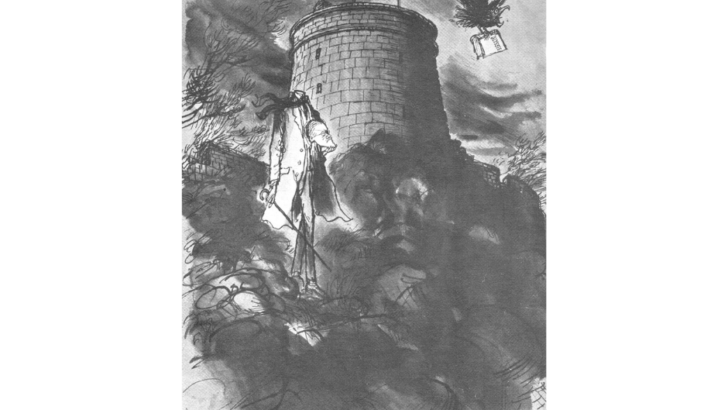Tales from the Tower: A Personal History of the James Joyce Tower & Museum by its Curators
by Vivien Igoe & Robert Nicholson, edited by Breandán Ó Broin, introduction by Vincent Bowne (Martello Publishing, €15.95 / £14.99)
This little book is produced by the Friends of the Joyce Tower Society and co-funded by Dún Laoghaire Rathdown County Council. Though very much a local product about a local landmark, it will have great appeal to many of Joyce’s readers far from these shores.
Though the main part of the text is by Vivien Igoe and Robert Nicholson, sections are provided by Vincent Browne on how the Tower began, a foreword by Julie Larkin, a useful chronology by Breandan Ó Broin, and a brief survey of the last decade or so at the tower under local government by Seamus Cannon. Vivien Igoe deals with the tower from 1804 to 1972, and Robert Nicolson with the later stage from 1972-2019 when the Tower was run by Bord Fáilte.
Voice
So some six figures make up the narrative voice, and the book is the better for it, for readers need a suitably varied idea of what went on over the years. Interest in the Tower was aroused first in a serious way in 1954, when the 50th anniversary of Bloomsday was celebrated by a sort of feckless, fractured literary spree. Running the Tower as a resource demanded steadier and more attentative minds in charge, which it had from Robert Nicholson and his associates.
After decades of distancing itself from James Joyce and all his works, the emerging modern Ireland grasped at Joycean nettle as symbolic of the newer, more open country it wanted to be. It is only fair to add, though, that there were several Catholic voices added to this debate in the person of Fr William T. Noon, the American expert who formerly link Joyce and Aquinas, Fr Eddie O’Donnell the psychologist and therapist, and Fr Peter Connolly the Professor of English at Maynooth and local pioneering Joyceans like W. B. Stanford, Kevin O’Sullivan and Patricia Hutchins.
This book concerns itself wisely enough with what it knows best, the local scene. Doubtless, this coming Sunday, the narrow roads of Sandcove well as the broad streets of Central Dublin will be filled with revellers dressed in fancy Edwardian gear, most of whom will prefer to have a ‘full Irish’ for breakfast rather than risk the fried pork kidney that Mr. Bloom actually had.
(Mr. Bloom’s method of cooking his kidney dismays all those who actually like that comestible, by not preparing it properly and then burning it: cooking was not one of Joyce’s talents, he left that to Nora.)
Celebrating
But celebrating a writer is easier sometimes than reading and understanding him. And in Joyce’s case, it is too easy to become over familiar with the texts in the sense that they say nothing to one. Joyce was once a giant on the scene, but these days, like Swift’s Gulliver, he seems to be well and truly pegged down to the ground by hordes of scribbling Lilliputians from countless countries.
But then, like Gulliver, a couple of hearty heaves and he is free to engage with the little minds beyond the reach of philosophy and to startle those who can still manage to be startled. It is worth recalling that Joyce’ works are comedies, not tragedies; they are Dantean rather than Sophoclean.
Appeal
The artist Ronald Searle realised this in his appealing cartoon treatment of the ghost of Sandycove, first published back in April 1963, in an American magazine devoted to extolling the glories and beauties of Ireland, both in landscape and literature, for the visitor. What our modern tourist trade owes to Mr Joyce and his admirers is incalculable.


 Peter Costello
Peter Costello “The ghost of Sandcove”, by Ronald Searle from Searle in the Sixties (Penguin Books, 1964; © the estate of Ronald Searle 1963)
“The ghost of Sandcove”, by Ronald Searle from Searle in the Sixties (Penguin Books, 1964; © the estate of Ronald Searle 1963)